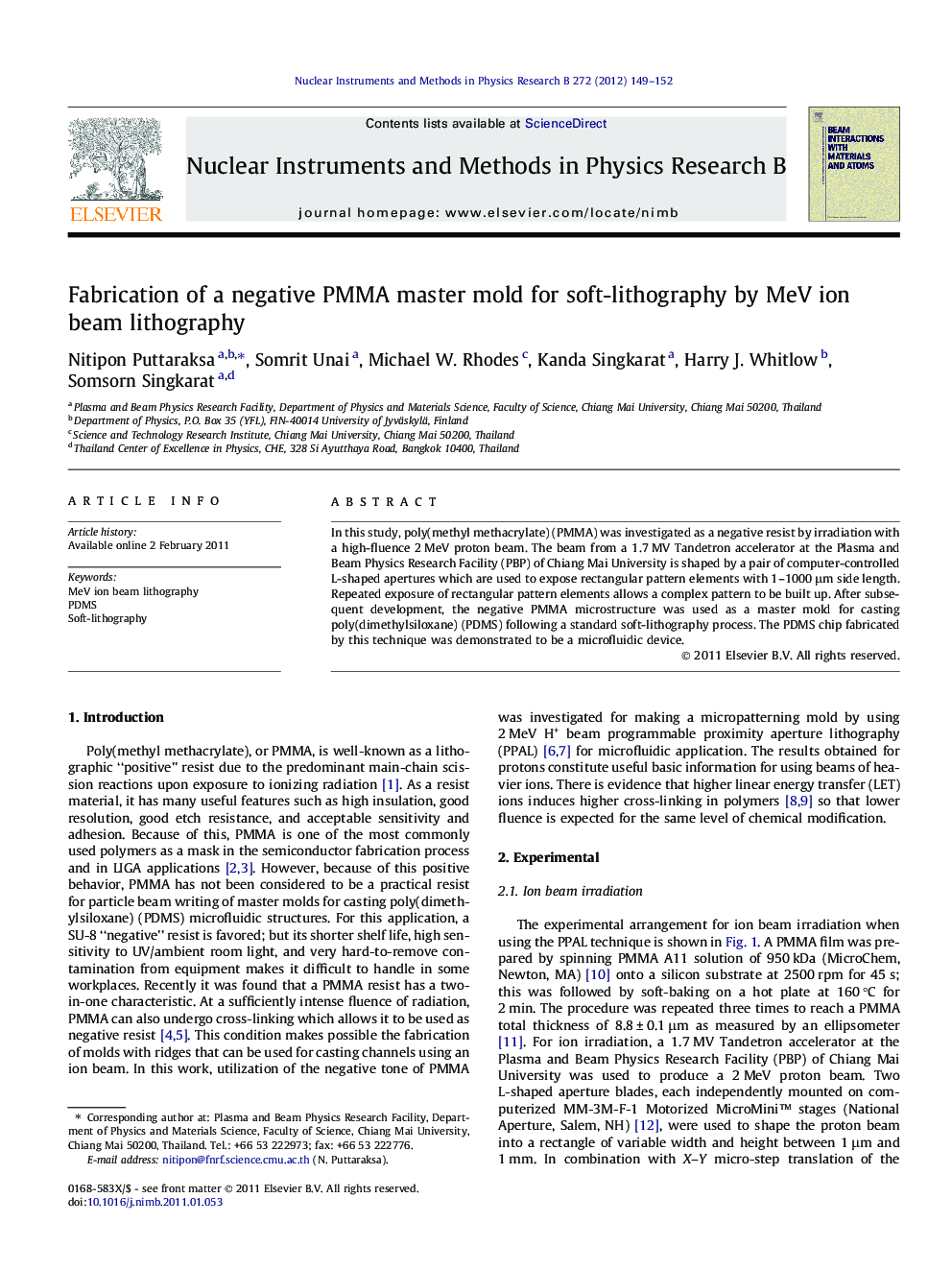| کد مقاله | کد نشریه | سال انتشار | مقاله انگلیسی | نسخه تمام متن |
|---|---|---|---|---|
| 1680923 | 1518745 | 2012 | 4 صفحه PDF | دانلود رایگان |

In this study, poly(methyl methacrylate) (PMMA) was investigated as a negative resist by irradiation with a high-fluence 2 MeV proton beam. The beam from a 1.7 MV Tandetron accelerator at the Plasma and Beam Physics Research Facility (PBP) of Chiang Mai University is shaped by a pair of computer-controlled L-shaped apertures which are used to expose rectangular pattern elements with 1–1000 μm side length. Repeated exposure of rectangular pattern elements allows a complex pattern to be built up. After subsequent development, the negative PMMA microstructure was used as a master mold for casting poly(dimethylsiloxane) (PDMS) following a standard soft-lithography process. The PDMS chip fabricated by this technique was demonstrated to be a microfluidic device.
Journal: Nuclear Instruments and Methods in Physics Research Section B: Beam Interactions with Materials and Atoms - Volume 272, 1 February 2012, Pages 149–152